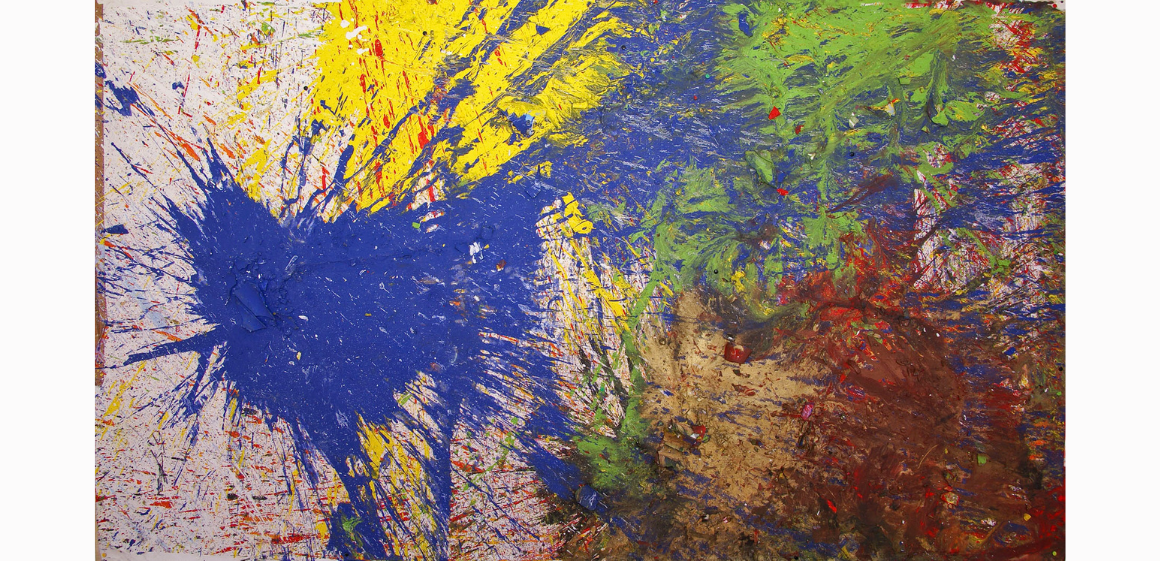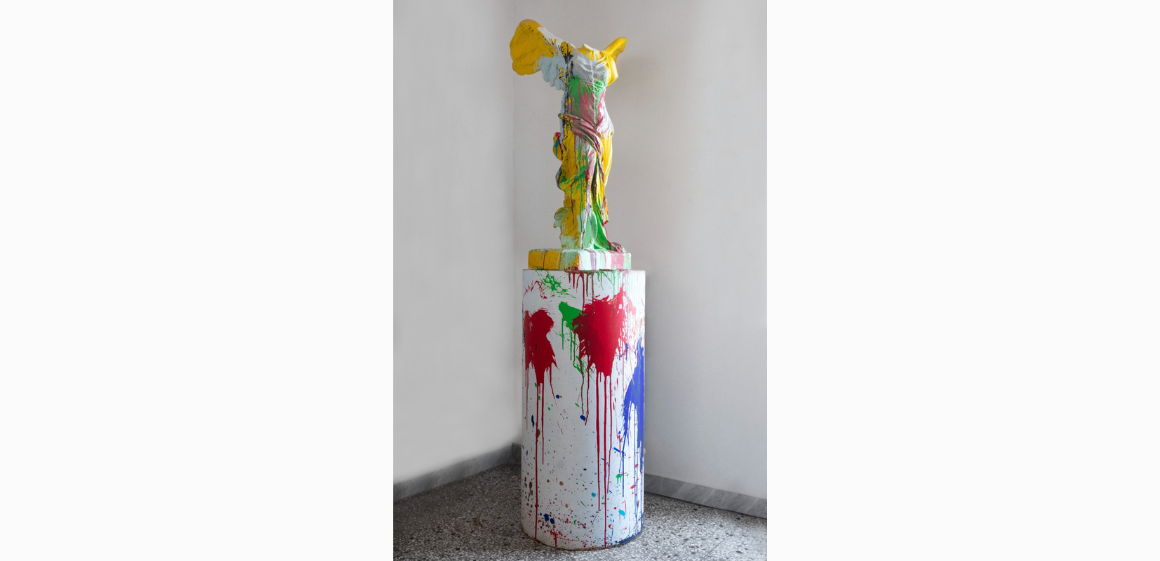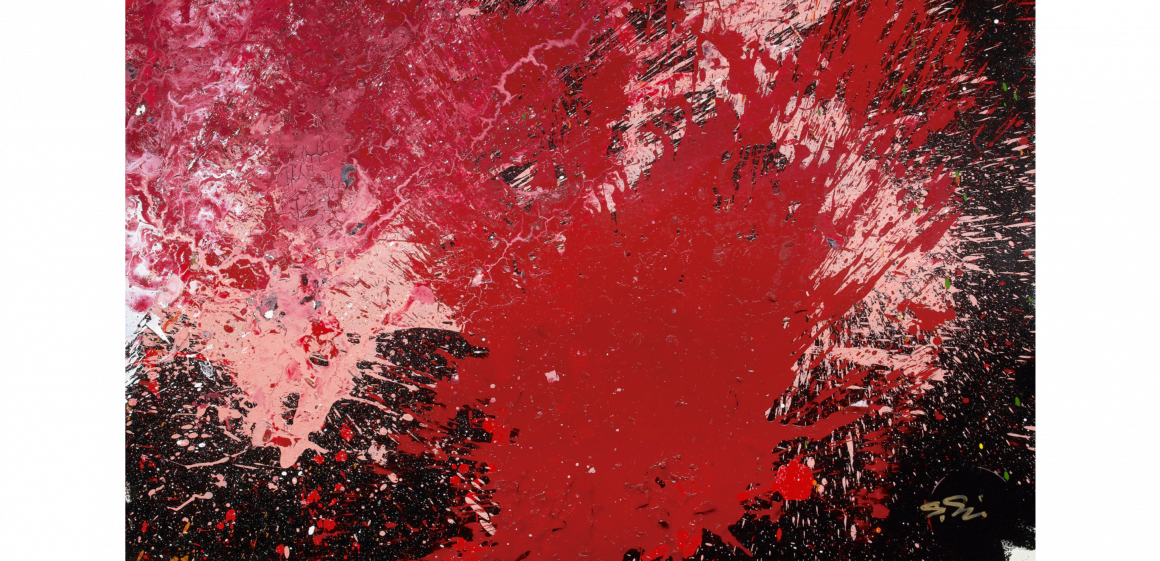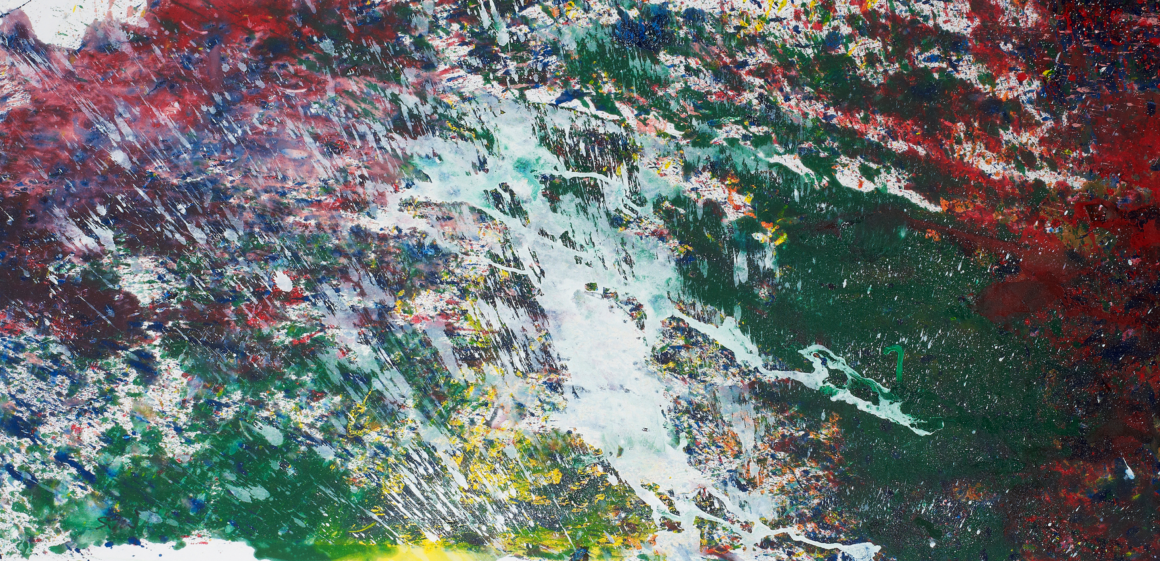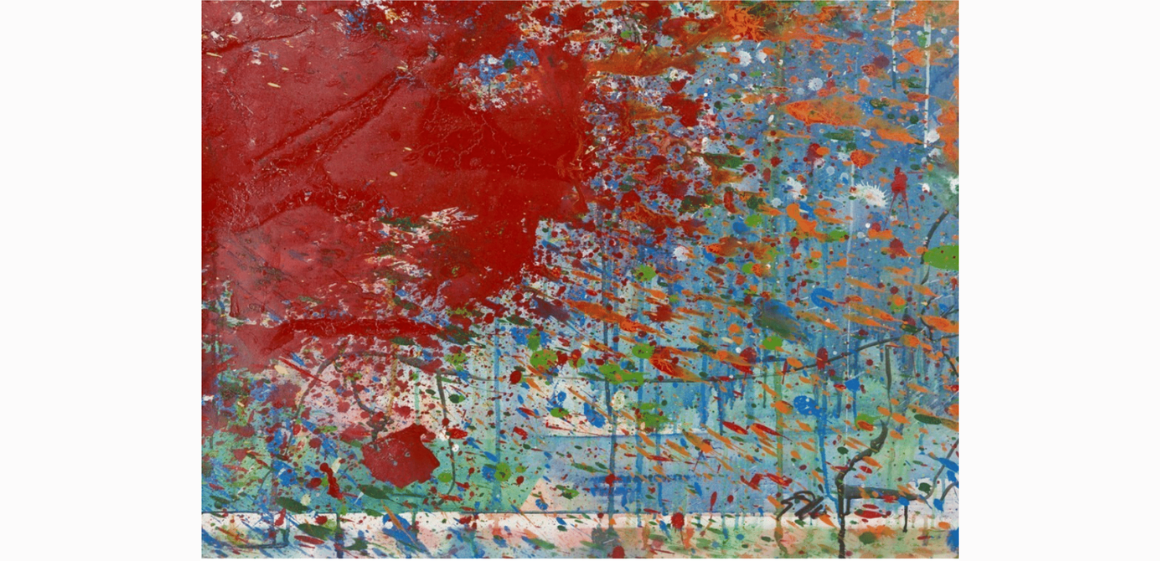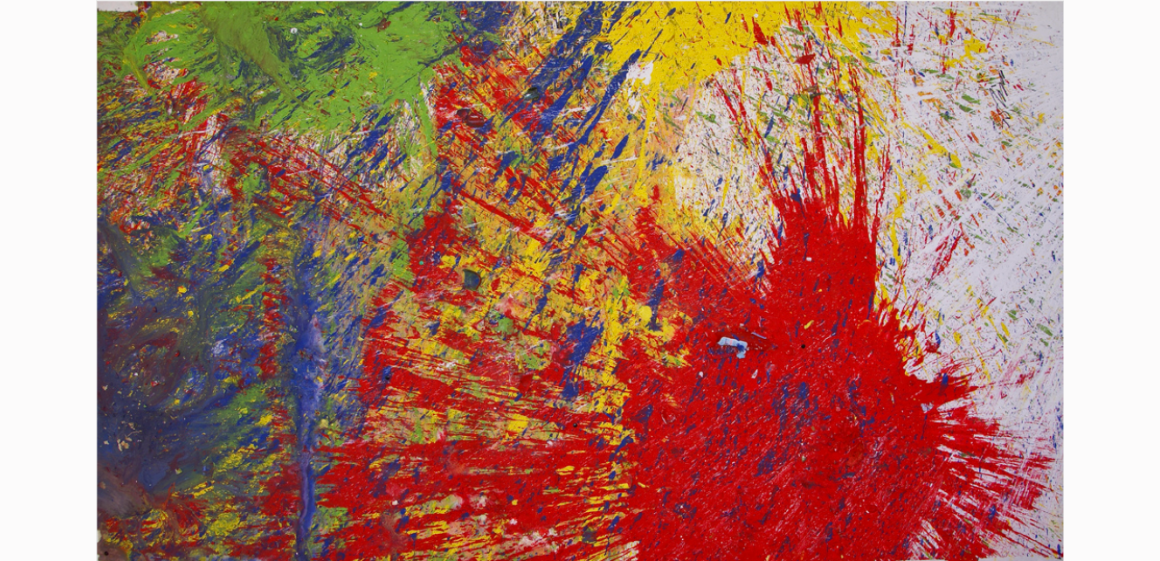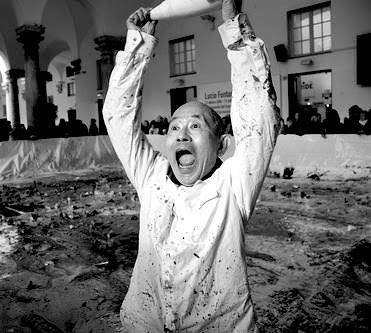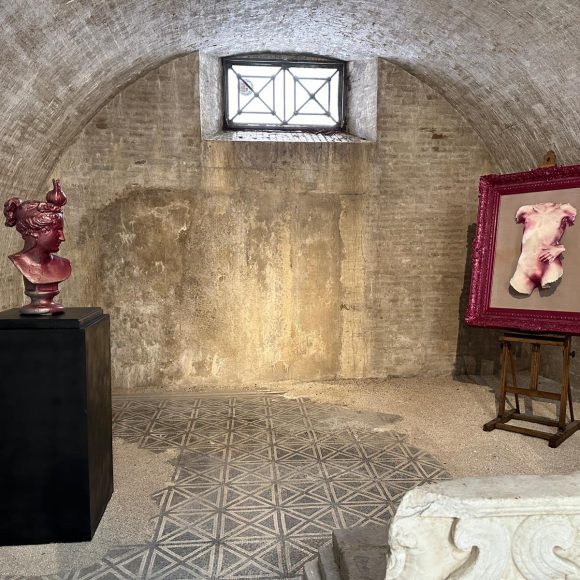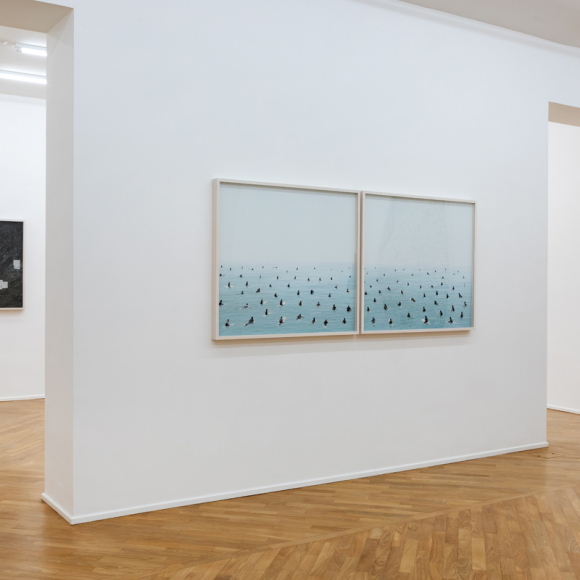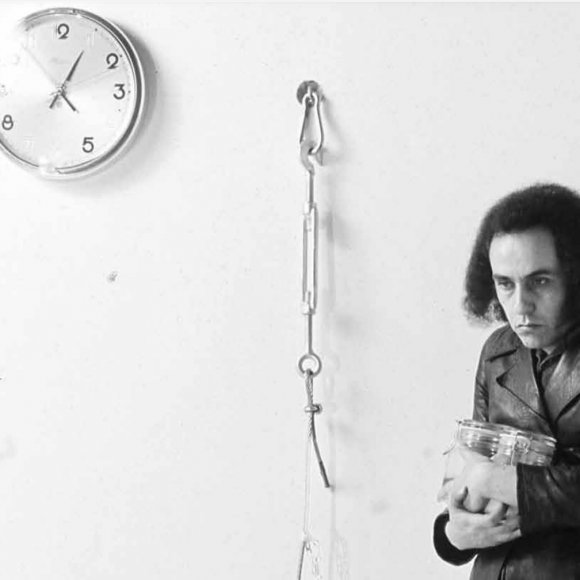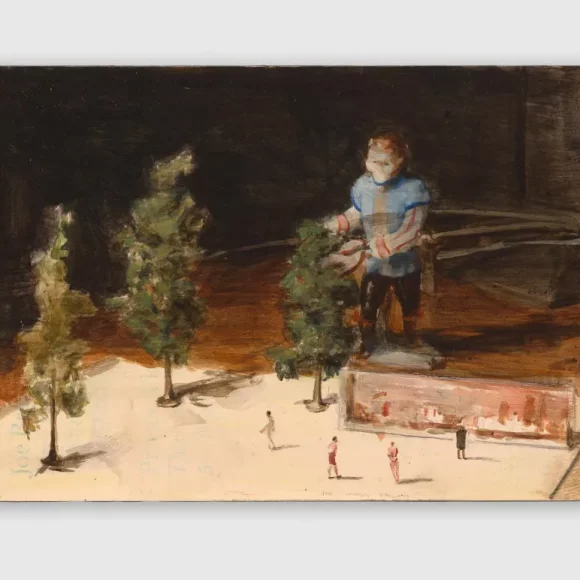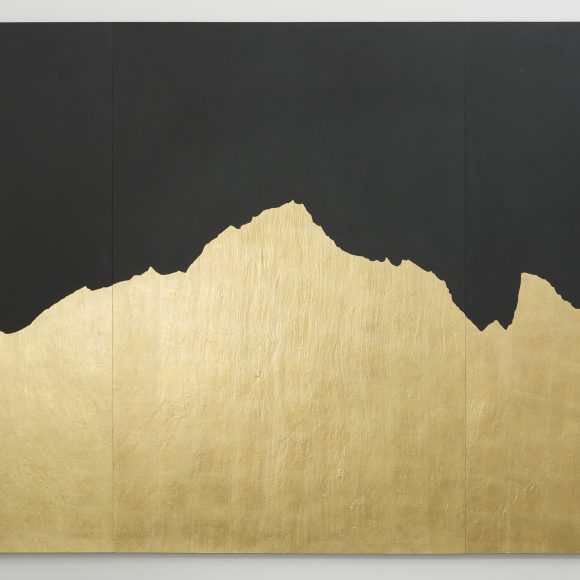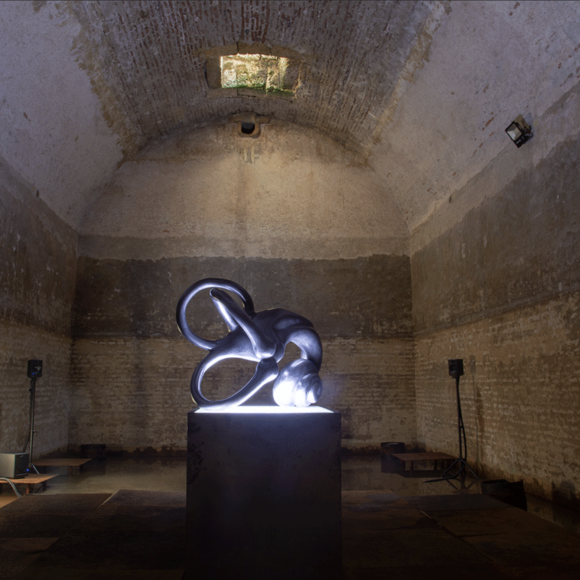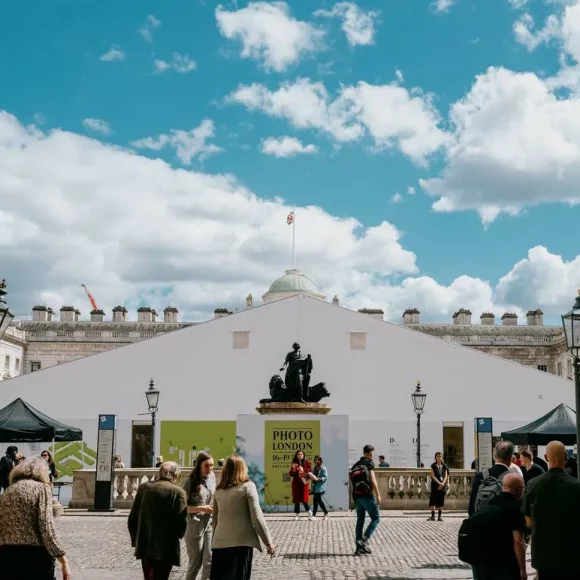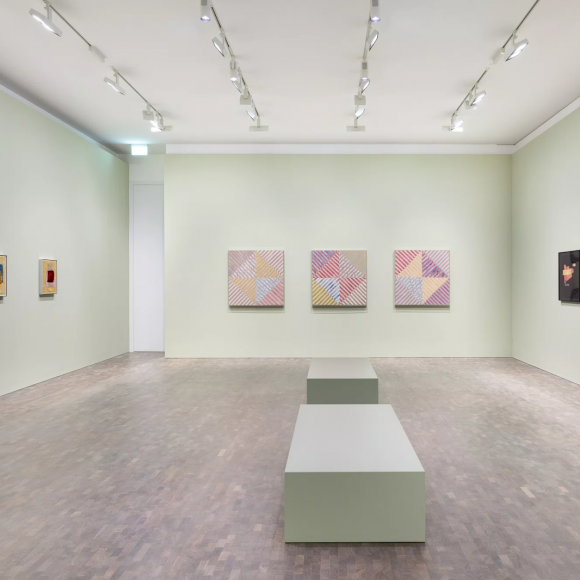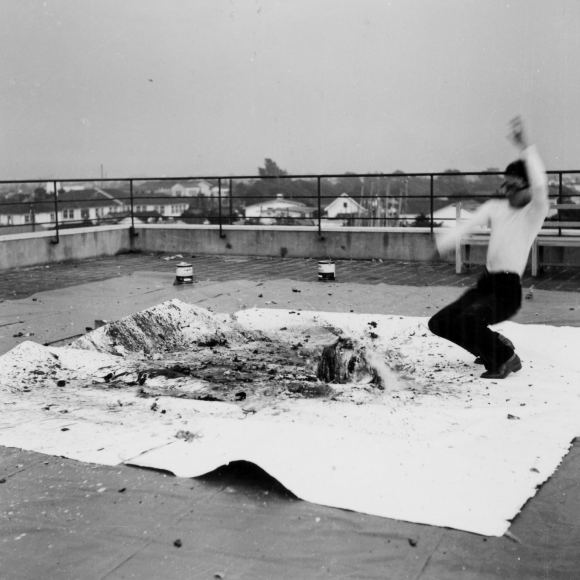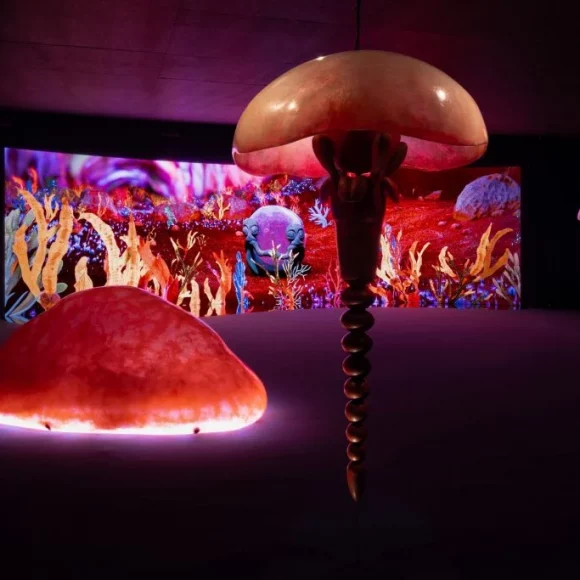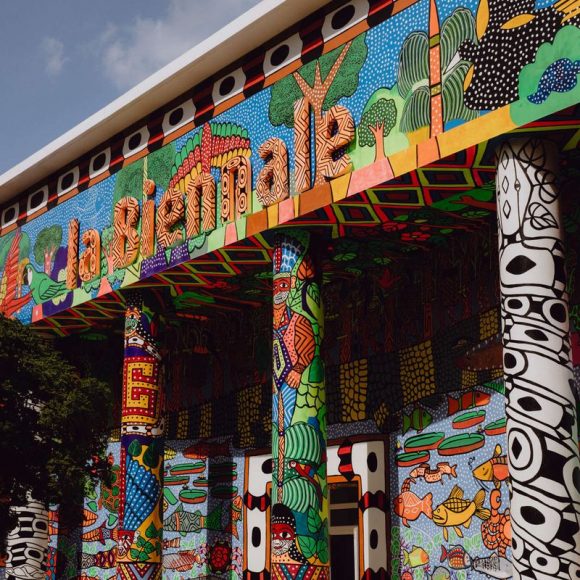SHOZO SHIMAMOTO
Shozo Shimamoto (1928 – 2013, Japan) was one of the founders of the Gutai group, the first radical post-war artistic group in Japan. Shimamoto, with Jiro Yoshihara, Akira Kanayama, Saburo Murakami and Kazuo Shiraga, challenged the boundaries of traditional artistic practices while promoting the individual approaches of its members. The group aimed to investigate the reciprocal connection between matter and physical action. Gutai artists expressed the desire to be part of a new, liberal-minded Japan and strongly rejected representative art. They collaborated with other artistic groups based in Europe and America.
Three years after its creation in 1954, the group produced the Gutai Stage Exhibition: it was the first time the stage was used as a living artistic space. During the performance, enriched by sounds, cranes and weapons, works were created by a shooting cannon, which Shimamoto himself manufactured. Artistic performances were themselves part of art exhibitions, and some of Shimamoto’s sound works were purchased by Centre Pompidou in Paris and by the City Museum in Ashiya. In 1972, when the group split up, Shimamoto started developing an interest in Mail and Networking art. These works were conceived as a social and collective effort that reflects a precise objective: to invite artists he met to express themselves with brushes, canvases, and colours. While engaging in these artistic experiments with various materials, he would document the performances. In 2007, Shimamoto participated at the Venice Biennale and participated in the Art Challenged Project, organizing an event in Beijing for disabled artists.
Throughout his extensive artistic career, Shimamoto continuously embraced and fused different styles. Nominated for the Nobel Peace Prize in 1996, Shimamoto died in Osaka in 2013 at the age of 85.
Selected Exhibitions
Solomon R. Guggenheim Museum, USA; Hauser and Wirth, USA; Museum of Contemporary Art, USA; Hammer Museum, USA; The Getty Research Institute, USA; National Art Center, Japan; Jeu de Paume, France; Moderna Museet, Sweden; Axel Vervoordt Gallery, Belgium; Museo d’ Arte Contemporanea at Villa Croce, Italy; Whitestone Gallery, Japan; White Stone Gallery, Hong Kong; Cardi Gallery, Italy; Elefante Gallery, Italy; CIAC, Italy.
Selected Collections
The Art Institute of Chicago, USA; Tate Modern, UK; The National Museum of Modern Art of Rome, Italy; Walker Arts Centre, USA; The Rachofsky Collection, USA; Nara National Art Museum, Japan; Museum of Contemporary Art, Japan.
Journal
Interested in Shozo Shimamoto’s work?

